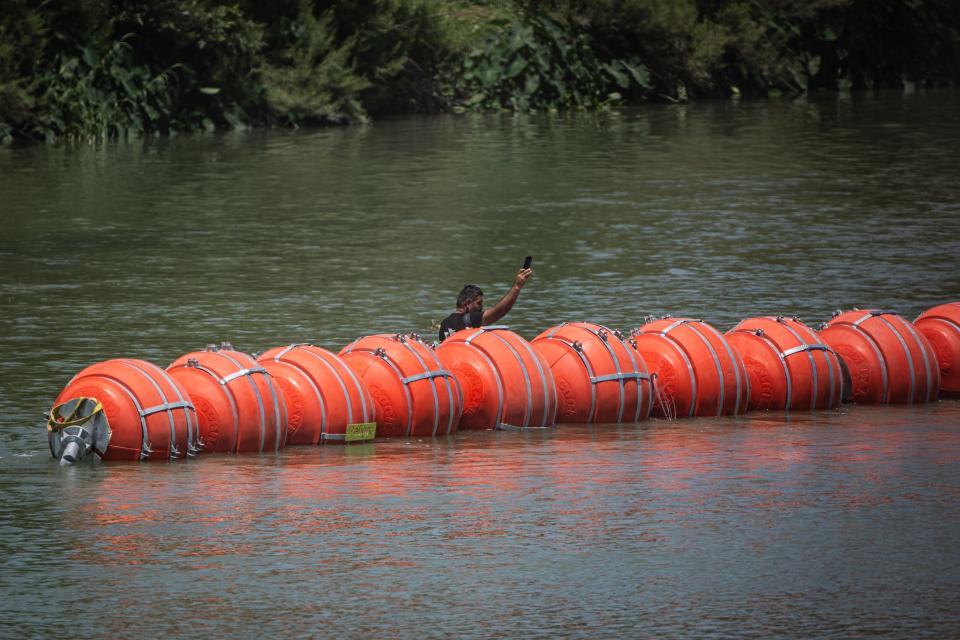Texas' Rio Grande buoys are mostly on Mexico's side of river, international agency says
- Oops!Something went wrong.Please try again later.
AUSTIN — The international commission that oversees the Rio Grande has determined that nearly all of the buoys installed in the river at Gov. Greg Abbott's order are floating on the Mexican side of the international boundary.
The finding by the International Boundary and Water Commission, which is responsible for border and water treaties between the United States and Mexico, was filed Tuesday by the U.S. Justice Department with the federal court that is overseeing the lawsuit against Abbott and the state of Texas.

"Comparing the survey results against the International Boundary Line (IBL) between the United States and Mexico, the survey as concurred in by (U.S. and Mexican) Commissioners reflects that the buoy chain crosses the IBL, and that a majority of the floating barrier ... is located within the territory of Mexico," the filing in the federal court's Western District of Texas states.
According to the court document, IBWC representatives from both nations late last month conducted a topographic survey of the section of the Rio Grande near Eagle Pass where the 1,000-foot chain of buoys have been floating since mid-July.
The survey found that only 108 feet of the chain was in American waters.
The court filing did not ask Senior Judge David Alan Ezra to take any immediate action but said the Justice Department "will address the relevance of these facts" in a later filing.
Abbott's office did respond to a call for comment. But lawyers for him and the state have asked Ezra to reject the Justice Department's request that the buoys be removed from the river while the court case plays itself out. Ezra has set a Aug. 22 hearing in Austin on the federal government's request.
More: Texas buoy barriers: Who governs the Rio Grande?
A spokesman for the boundary commission declined to comment on the survey's findings.
"Given that this is in pending litigation and the Department of Justice has filed the suit, we'll let the documents speak for themselves," said IBWC spokesman Frank Fisher.
The government of Mexico filed a complaint in June after Abbott had announced his intention to place the floating barriers in the international river as part of the state of Texas' effort to stem the flow of unlawful migration.
More: Feds ask court to order removal of floating barrier from Rio Grande as lawsuit proceeds
Early this month, after a body was discovered stuck to the floating devices, Mexican President Andres Manuel López Obrador condemned the decision to install the barriers.
“Abbott shouldn’t act like that," López Obrador said at a Aug. 3 news conference, referring to the Texas governor. "It’s inhumane.”
It remains unclear whether the buoys played a role in the person's death, but Texas authorities have said the drowning likely occurred upstream and that the river's current carried the body to the barriers.
The federal lawsuit, filed July 24, asserts that Texas had overstepped its authority by installing the devices without seeking approval from the U.S. Army Corps of Engineers as required by the Rivers and Harbors Act of 1899. Lawyers for Abbott and the state have argued that Texas has a sovereign right to repel what in court filing and public statements they have called an "invasion" by undocumented immigrants and drug smugglers.
This article originally appeared on Corpus Christi Caller Times: Abbott's buoys were placed mostly in Mexican territory, agency says

